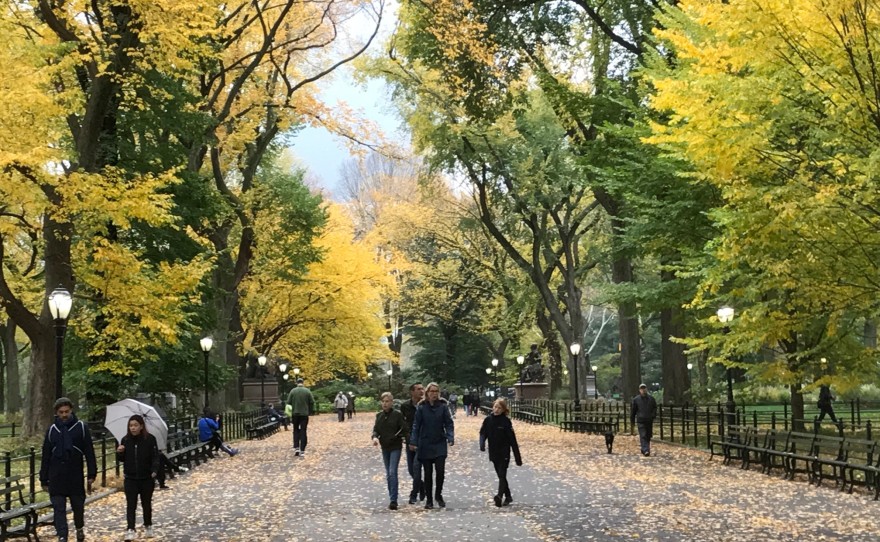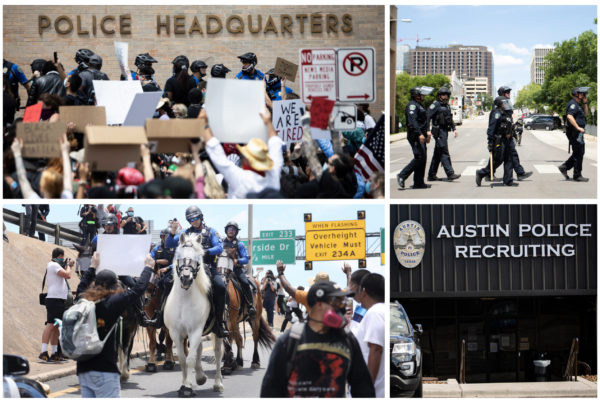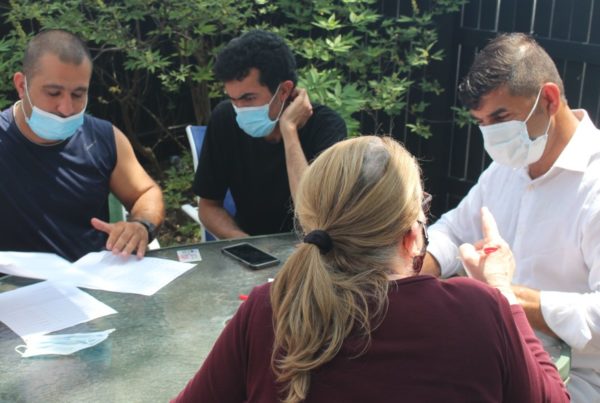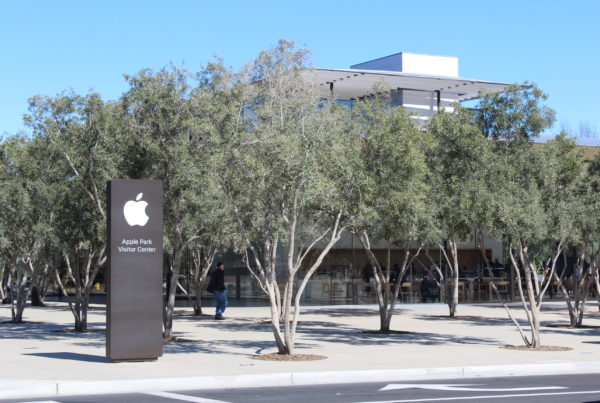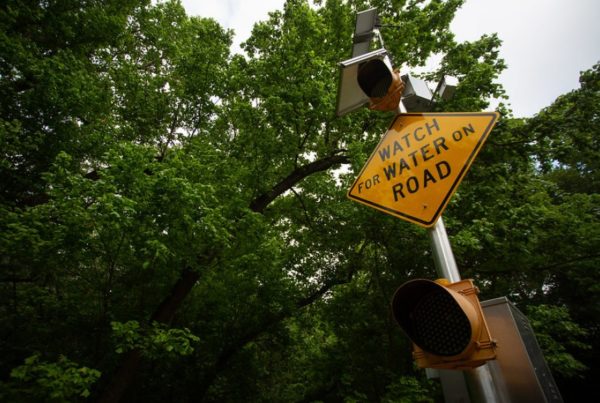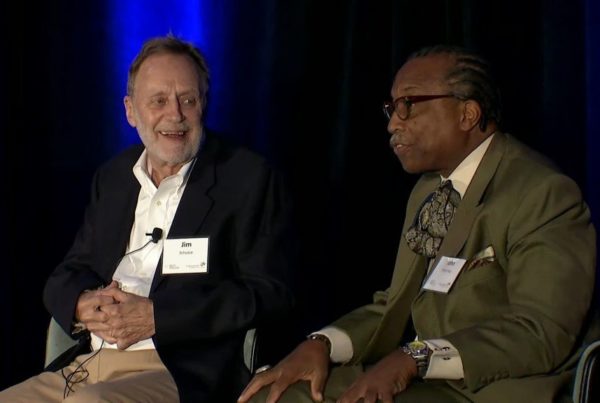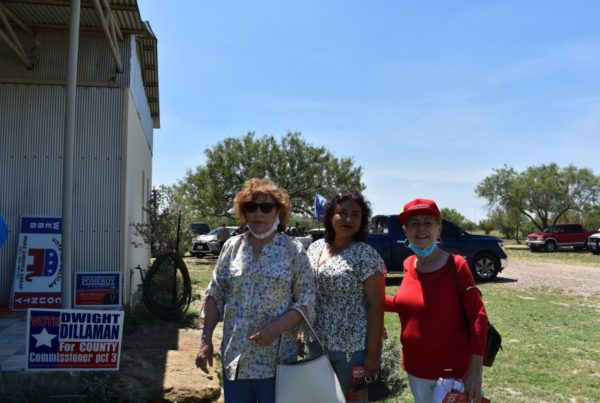If you’ve been to New York City’s Central Park, you likely were amazed by its beauty and its ability to infuse a kind of country calm to those in the middle of one of the continent’s most hectic cities.
And if it weren’t for one San Antonio native, Elizabeth Barlow Rogers, the park as we know it today might not exist. Rogers eventually hired Sara Cedar Miller to work for the Central Park Conservancy.
“On a beautiful day, after a long winter, there are trees in bloom and daffodils and people look at each other and just smile,” Miller said.
Miller has worked for the conservancy for 36 years. She said the park wasn’t always such a nice place. Sometimes it was even a dangerous place.
“The four years before I came, they took off like 25,000 square feet of graffiti that covered the rocks and the trees,” she said. “There was bald spots and broken pavement. A lot of tree limbs were broken. It wasn’t nice.”
In fact, the whole of New York City was in trouble in the 1970s. Suburban flight was in full swing and New Yorkers were taking their tax dollars to the suburbs when they moved out.
The city’s fiscal crisis mounted, and the parks department’s repeated budget cuts left it barely able to maintain the park. Even when Miller was hired as a photographer in 1983, money was still tight.
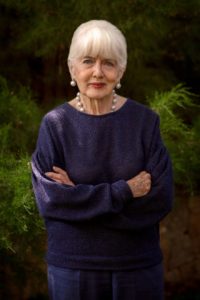
Elizabeth Barlow Rogers
“There was almost no money. You had to own your own cameras. You had to have your own darkroom.So I applied (for a job at the Central Park Conservancy) and Betsey, out of all the people hired me,” Miller said.
That Betsey she refers to is Elizabeth Barlow Rogers, who remembers her Texas childhood fondly.
“I’m a native of San Antonio. I grew up in San Antonio,” Rogers said.
Interestingly, the woman who created the Central Park Conservancy grew up in Alamo Heights back in the 1940s and 50s.
“Alamo Heights was still growing and we were right there on the edge. And so as a little girl, I went in the deep, deep woods,” she said.
Those deep woods were those of Olmos Basin Park, just across Contour Drive from the family home. Time spent there and on the family ranch east of Johnson City instilled in her a love of nature.
After high school, she attended a distant college in Massachusetts.
“I went off to college in the east, went to Wellesley College, and then I married my Yale boyfriend,” Rogers said.
She earned her art history degree, and then another in urban planning at Yale. Her fascination with the natural world and urban planning combined with her interest in Central Park, and she focused on its co-designer.
“Who is this near forgotten 19th Century figure, Frederick Law Olmsted, who had designed this great park?” she said.
Rogers wrote a book on Olmsted — her first of 11 she eventually would write — and found her way into a voluntary position on the Central Park task force. Then Park Commissioner Gordon Davis appointed her first job there, as Central Park Administrator.
“After Mayor Koch was elected [the] city was still in fiscal crisis, but coming out,” she said.
With the backing of Koch and Davis, Rogers started finding major donors who wanted to attach their money to park projects that the city couldn’t afford to fix. People like Brooke Astor, Paul Newman and Jacqueline Kennedy Onassis. Sara Cedar Miller said these public/private partnerships began to make sweeping improvements to the park.
“Absolutely no one had ever heard of a public private partnership for a park. One of our donors — I love his quote — he said, ‘You can smell the product of your investment. You go out to the park, you can see your donation at work,’” Miller said.
In 1980 Rogers created the Central Park Conservancy, whose board had deep roots into New York. She identified project-after-project that needed work, raised the money for it, and fixed it.
As people returned to the park, musicians began to busk the more populated parts, adding culture to nature.
Success bred success and even New Yorkers who weren’t wealthy began to buy in and take pride. As it turns out Central Park, by Olmsted’s vision, was actually pretty radical.
European parks were largely the grounds around castles, and not necessarily intended for use by everyone. The idea of a park for all to relax in, even the common man, was a new American one.
“You’re right. The People’s Park. It’s a great physical expression of American democracy,” said Rogers.
And then in 1980 a tragic moment for the park: John Lennon was shot just outside of it at The Dakota. Afterwards, Rogers said Yoko Ono proposed a major installation at the 72nd Street entrance, the one she and John used to enter the park.
“And she wanted nations of the world. Give us your artifacts like fountains and, you know, symbols of your countries and all. I said, ‘No,’” Rogers said.
Rogers noted that the idea wouldn’t fit into Frederick Law Olmsted’s concept of Central Park. After some thought, Ono understood.
Instead, countries donated trees and benches, and at a wide spot where pathways converge, inlaid tile spells out Lennon’s most popular song, Imagine. Sara Cedar Miller said the compromise works wonderfully.
“It is a garden of international peace. That’s what Yoko wanted it to be,” she said.
Given the state of Central Park in the 1970s, Miller says imagination is what it took to have re-created a place that’s now considered one of the world’s top public spaces.
“It’s also like a museum, with collections. It’s trees instead of paintings. It’s the designs of the bridges and Bethesda Terrace and the arches there,” Miller said. “They’re some of the most important elements of decorative art in America of the 19th century.”
Rogers herself feels like she planted a seed that’s now flowered into something beyond her original conception.
“I get much more credit than I’m due. It’s all the people. And they have just done a marvelous job,” Rogers said. “And they are the ones that have truly carried on the Olmstead vision. And the park is a great work of art as well as this wonderful democratic recreation place.”
The Central Park Conservancy has raised and invested more than a billion dollars for the park since 1980. The rebirth of Central Park as a clean, safe, inspiring 843-acre refuge in the heart of hectic New York is the work of, incredibly, a San Antonio woman who had the imagination to dream.


